Mayan fire ceremony and learning my nahual
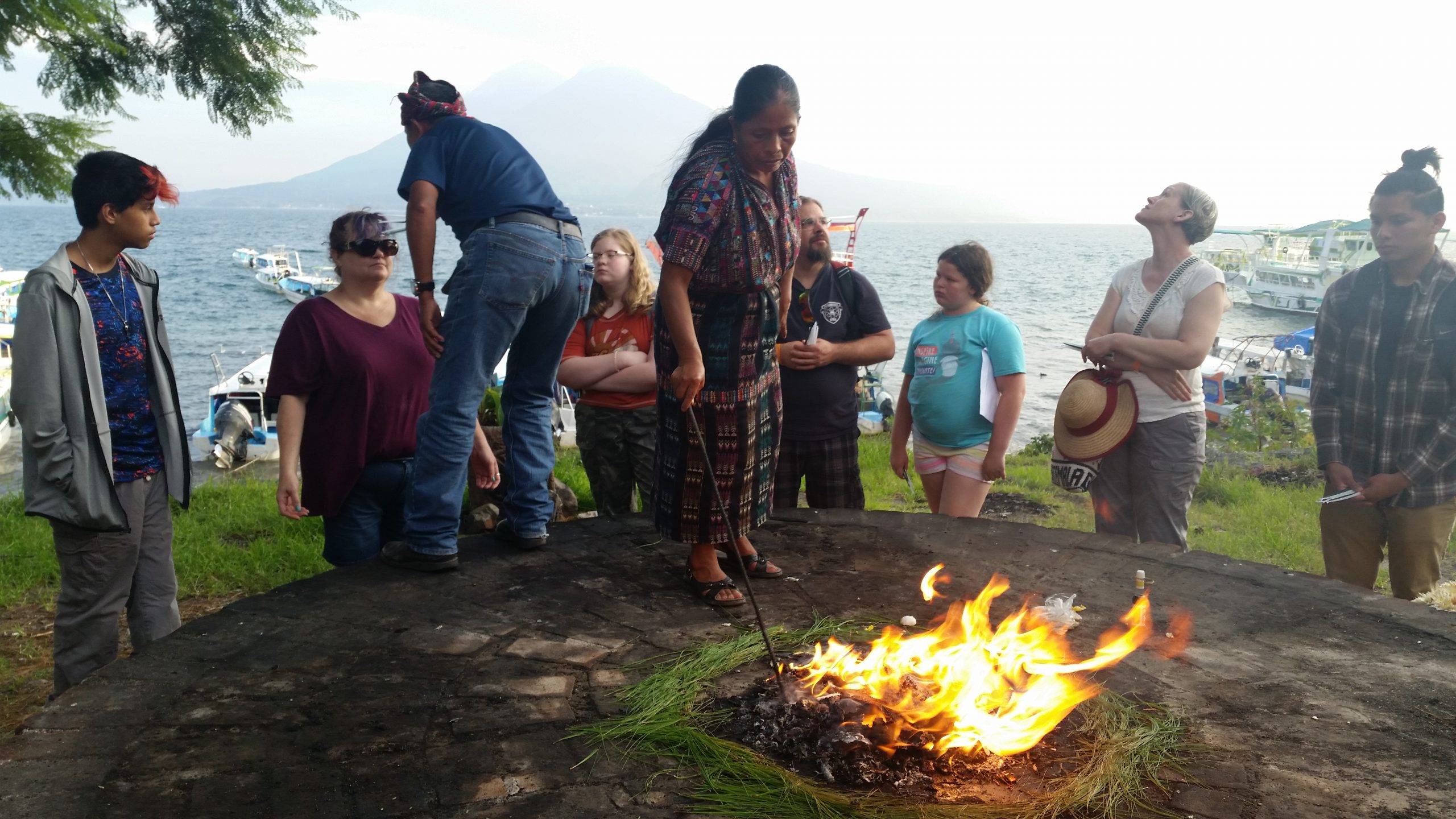
In some cases, we as foreigners enter the beautiful, magical world of indigenous Guatemala and are mesmerized by the beautiful flora and topography, entranced by the stunning traditional clothing and song of the marimba, fascinated by the handicrafts, and captivated by the glottal sounds of Mayan languages.
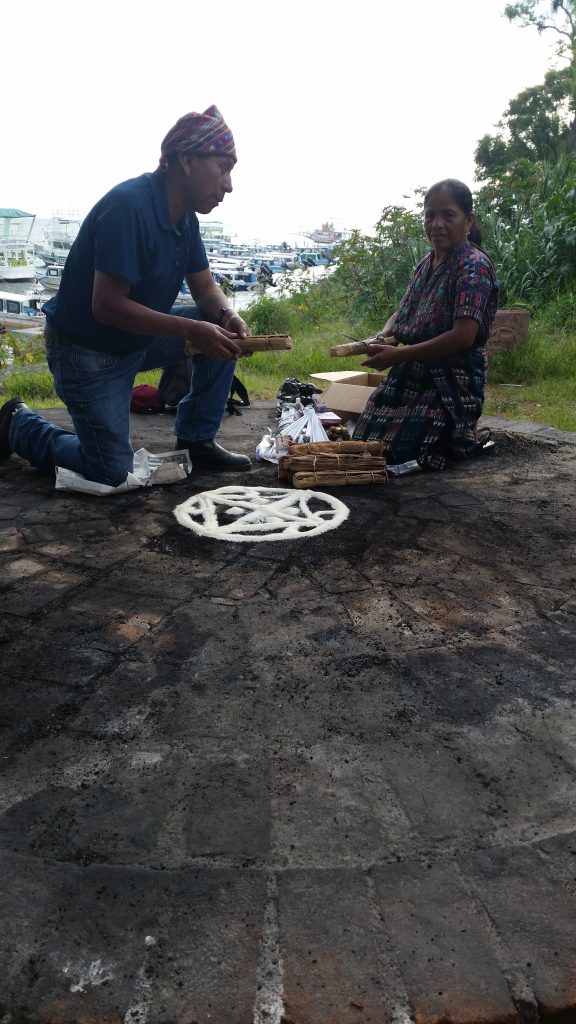 One of the biggest challenges of working in Guatemala to make lasting and profound changes for the improvement of health and education there is knowing how to respectfully work in a community and becoming trusted such that the help you offer is welcome. Part of earning that trust comes from understanding and appreciating the culture.
One of the biggest challenges of working in Guatemala to make lasting and profound changes for the improvement of health and education there is knowing how to respectfully work in a community and becoming trusted such that the help you offer is welcome. Part of earning that trust comes from understanding and appreciating the culture.
This is why, with each of our service trips to Guatemala, we at Guatemala Service Projects build in equal parts of “service” and “tourism”. The tourism aspects may appear to be fun, vacation-type activities, but they aid in our understanding of Guatemalan culture and make us forge better relationships in the communities we serve. Nothing proves the heartfelt wish to be international friends more than showing an interest and respect for your friend’s culture.
We are lucky that the people of Guatemala are so open and inviting, willing to share their culture with us!
On the fourth day of the trip, after we had visited with the Alfa y Omega school in Santiago Atitlan, we spent the late afternoon on the shore of Lake Atitlan, in Jucunya, participating in a Mayan fire ceremony. It was the second such ceremony for my family and Trent, but a first for everyone else in our travel group.
In a Mayan fire ceremony, the shaman (or “priest” or “spiritual guide” — they go by different terms) begins by building the fire. A circle of sugar is placed on the ground first and then intersecting perpendicular lines in the middle representing the four cardinal points. In this ceremony, the priest also “drew” (with sugar crystals) the nahual based on the specific day of the Mayan calendar, Kawoq. Mayans believe that with the cyclical pattern of days, there are some days that are better for asking for certain prayers or certain types of healing. On the particular day we gathered, it was especially ripe for prayers of fertility, healthy pregnancy, and the like. No one in our group had this nahual, and none of us were pregnant or requesting prayers for fertility.
After the base of the fire was made, the priest added other ingredients — incense, eggs, flowers, candles, tobacco, etc. — all as offerings to God. When the fire was ignited, the prayers began. In his native language of Kaqchikel, the priest offered prayers of thanks, for all things natural and material, health, family, friends, fortune, and then asked that we, as visitors bringing support to the local communities, be granted safety, health and fortune as well as blessings for the communities we were there to support.
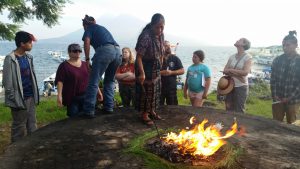 After a long period of general prayers and offering thanks, the priest lifted individual concerns — the smoke and wind being transport mechanisms for our messages. We commented afterward how amazing it was to realize that the wind picked up during the ceremony and died down again at the end, right after the fire had burned its course, and also how ironic it was that the smoke followed the priest around the stone alter, bringing the opportunity for each individual’s personal requests to be carried away, upward toward receiving ears.
After a long period of general prayers and offering thanks, the priest lifted individual concerns — the smoke and wind being transport mechanisms for our messages. We commented afterward how amazing it was to realize that the wind picked up during the ceremony and died down again at the end, right after the fire had burned its course, and also how ironic it was that the smoke followed the priest around the stone alter, bringing the opportunity for each individual’s personal requests to be carried away, upward toward receiving ears.
We were sprayed with a flower-scented water, representing the purification of negative energies, and had candles brushed on the tops of our heads, along our shoulders, back, and sleeves before we kissed the candles and had them thrown into the fire. All throughout, we listened to the priest earnestly asking for prayers and blessings for each person standing around the fire. One thing undertaken by the priest that I learned new is the act of pressing or pounding the ends of the candles into the palm during the prayers. This is to represent job prosperity (working with the hands) and the related economic needs being met.
I have to admit, there were things that the priest knew about members of our group before they were made known to him. And, two of the 14 in our group have already had prayers answered since our return two weeks ago.
I offer you the opportunity for a window into the prayers and wishes of my son, Scott…
After each person’s prayers ascend with the smoke, the ceremony ends when the fire is naturally extinguished. The entire thing takes approximately two hours.
When you are born, you inherit an animal spirit guide, and it is said that you receive special gifts and protections of this spirit animal. My nahual, based on my date of birth, is Ak’Ab’Al (or Aq’Ab’Al) and my associated animal is a bat. For those that know me well, do you think I exhibit the characteristics shown?
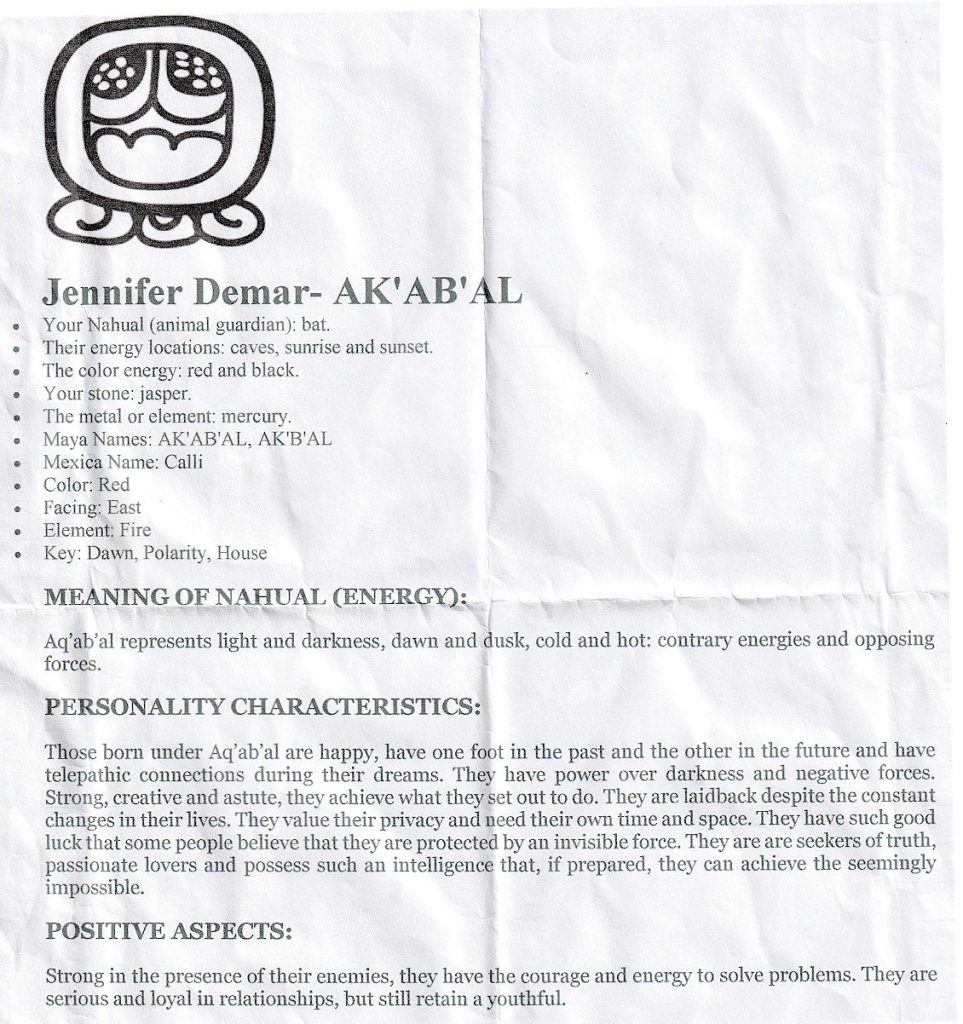
Thank you to our friend, Dina Salpor, for arranging this opportunity to learn and be blessed!

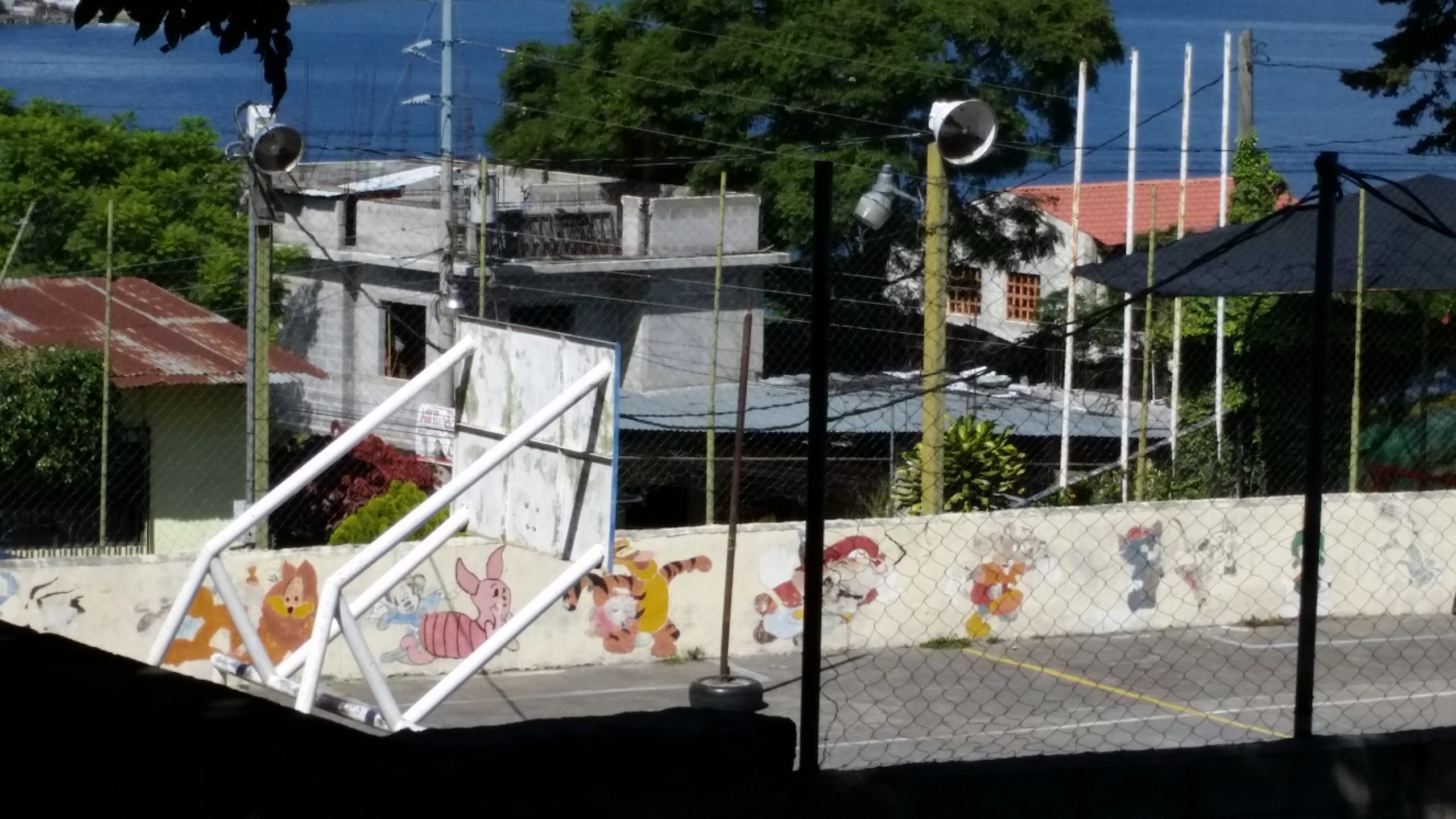
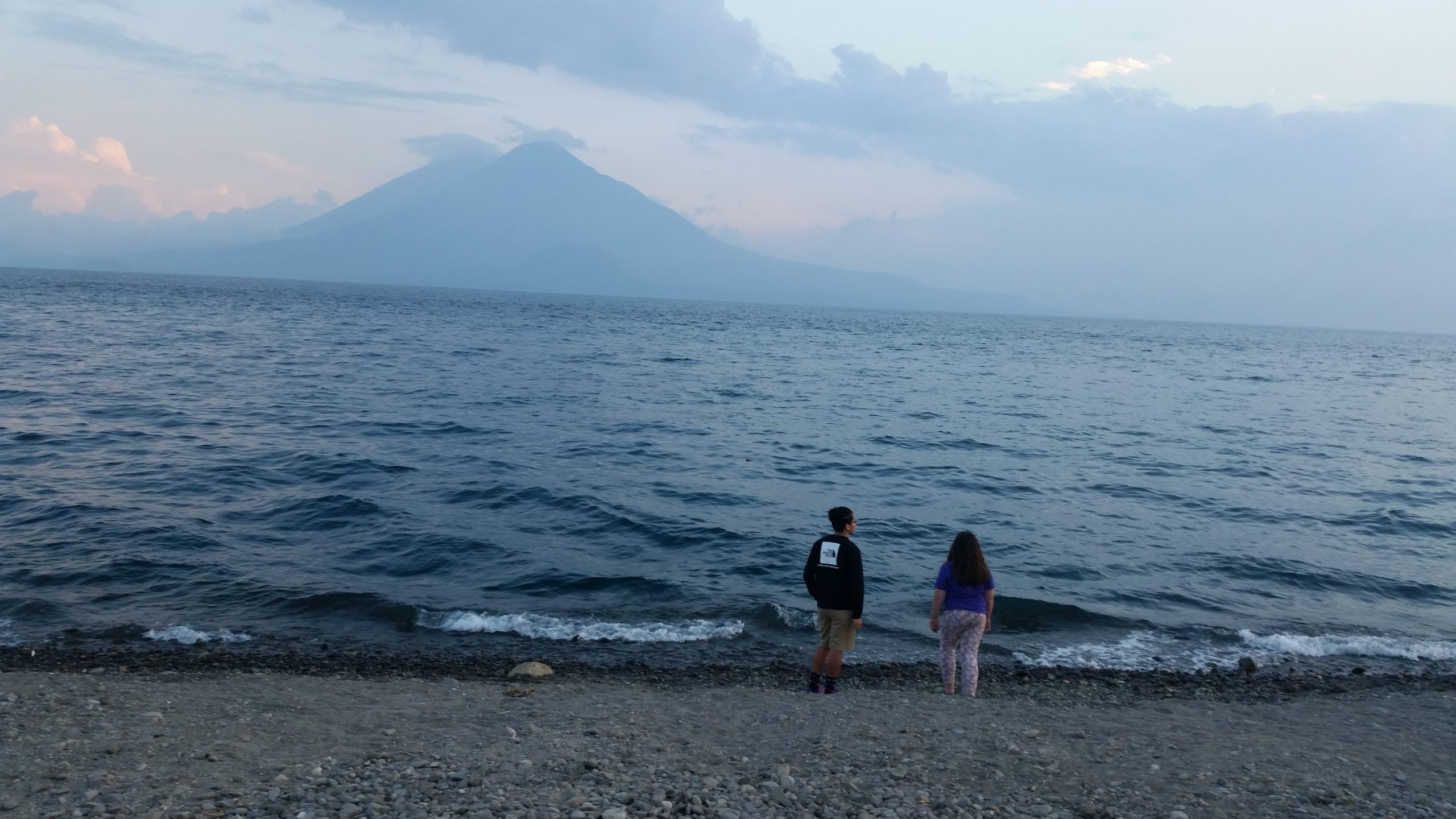
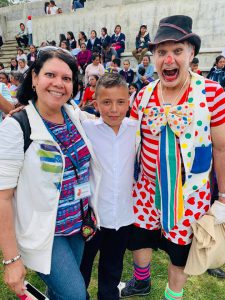 The “right” opportunity arose when I learned about a travel opportunity for adoptive families which would include volunteer work and cultural sightseeing. Being members of that team had a profound impact on me, Lillian and Andrew. Not only were we able to make a real connection to our son’s birthplace, but we met incredibly warm and generous people, all of whom we now consider to be a part of our “family.” In addition to the volunteer work I shared with the Team, I also was able to “give back” by performing as my alter ego, “Farfel the Clown” at a barbecue for children of The Backyard School. It will remain one the proudest and happiest memories of my life.
The “right” opportunity arose when I learned about a travel opportunity for adoptive families which would include volunteer work and cultural sightseeing. Being members of that team had a profound impact on me, Lillian and Andrew. Not only were we able to make a real connection to our son’s birthplace, but we met incredibly warm and generous people, all of whom we now consider to be a part of our “family.” In addition to the volunteer work I shared with the Team, I also was able to “give back” by performing as my alter ego, “Farfel the Clown” at a barbecue for children of The Backyard School. It will remain one the proudest and happiest memories of my life.